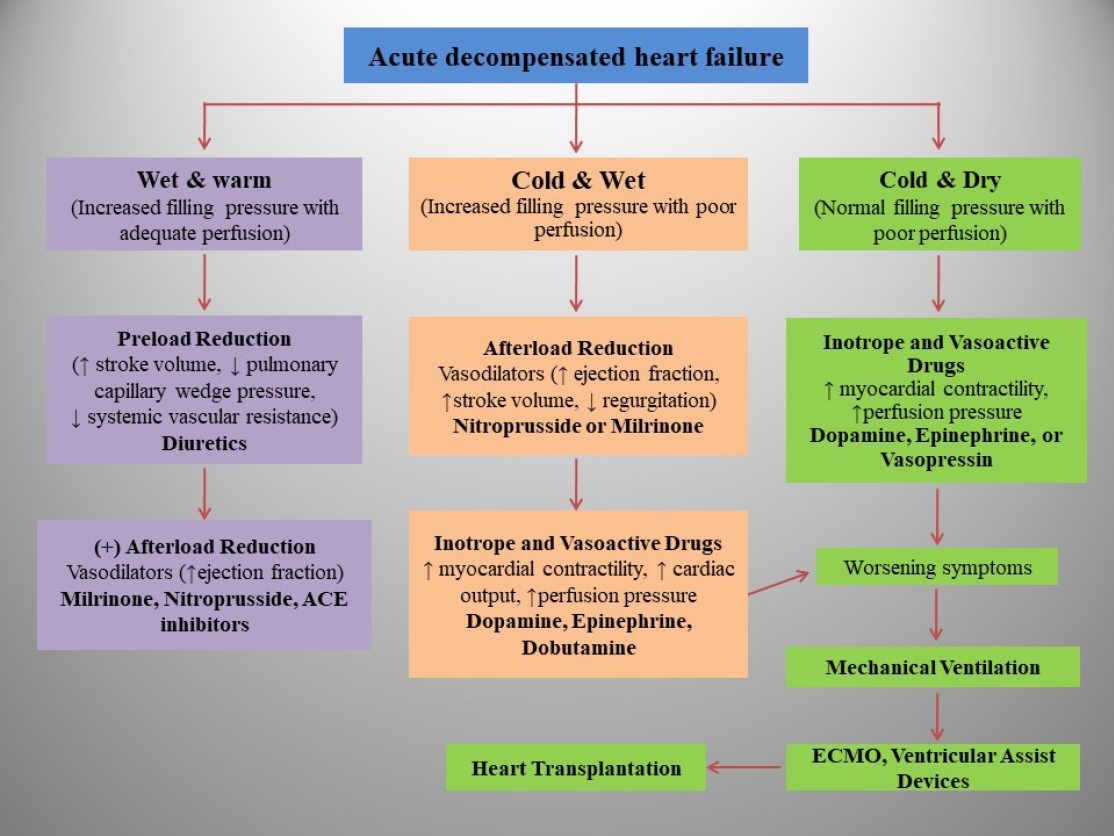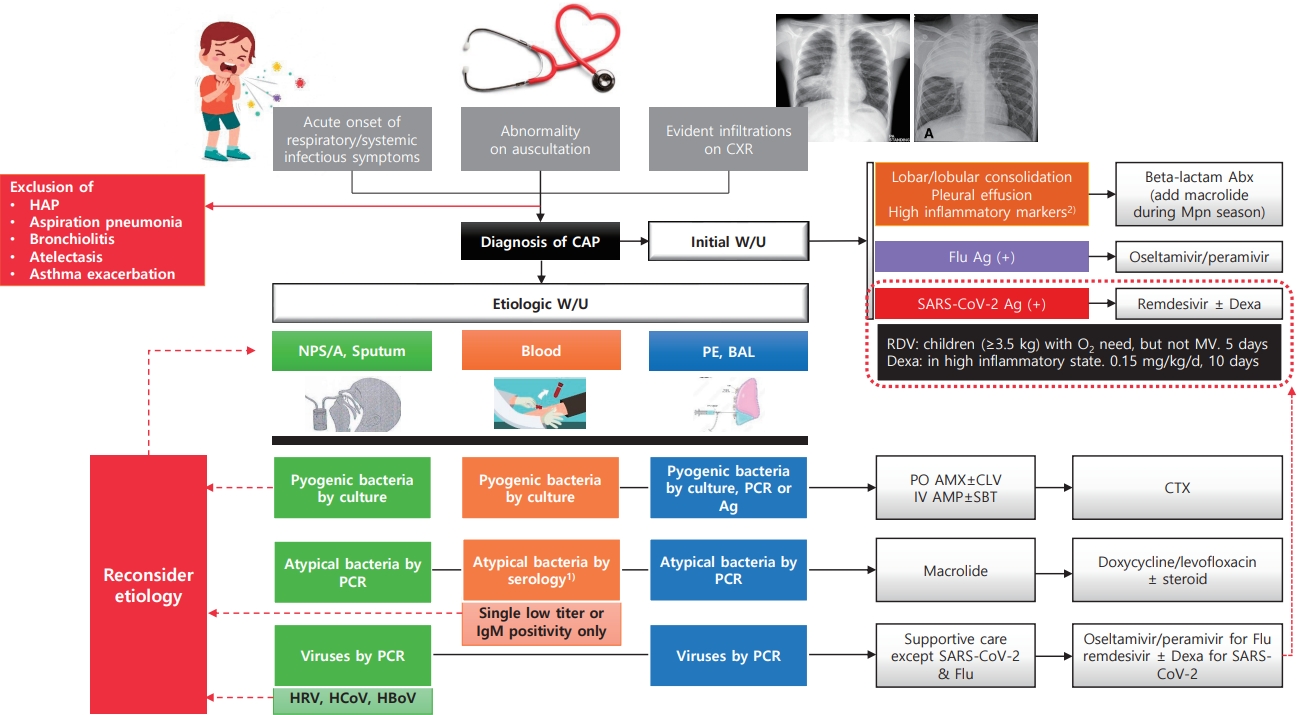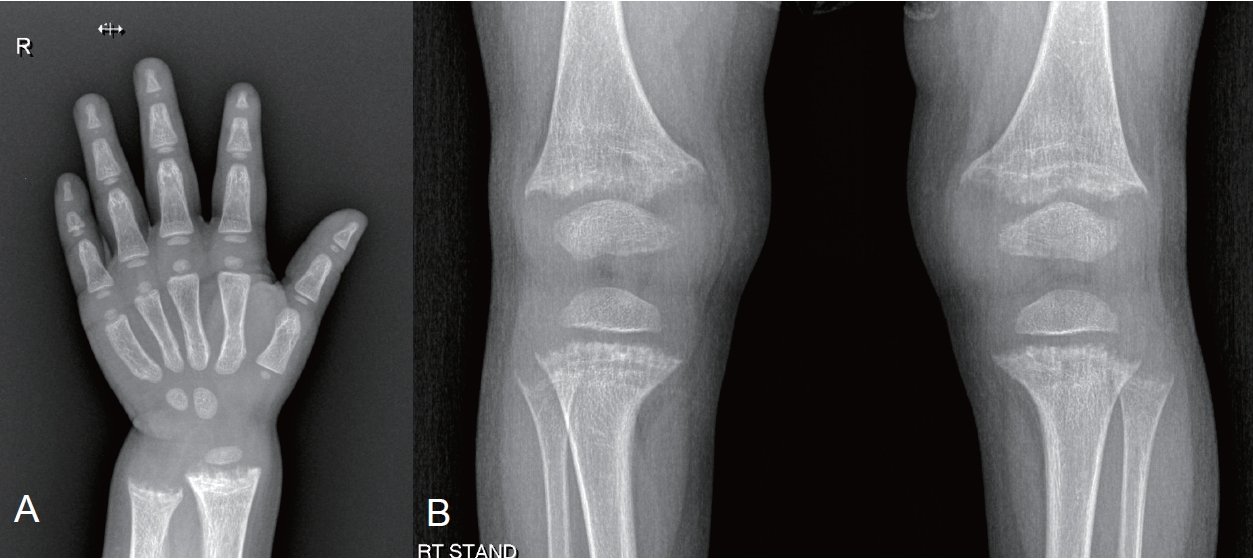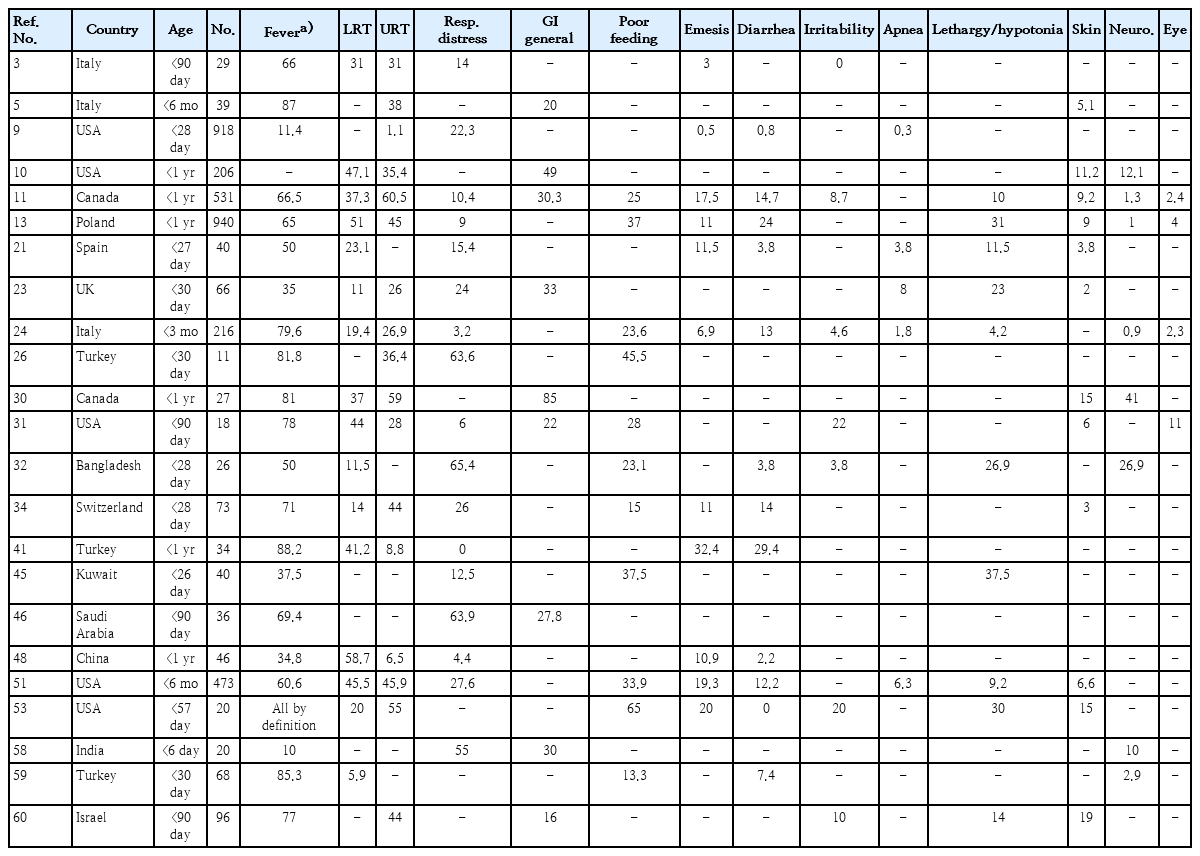Topics
- Page Path
-
- HOME
- TOPICS
- Topics
- Topics
-
- Adolescence Medicine (3)
- Allergy (52)
- Cardiology (76)
- Critical Care Medicine (8)
- Developmental and Behavioral Medicine (17)
- Emergency Medicine (5)
- Endocrinology (51)
- Gastroenterology (57)
- General Pediatrics (37)
- Genetics and Metabolism (20)
- Hematology (11)
- Immunology (12)
- Infection (66)
- Neonatology (Perinatology) (103)
- Nephrology (Genitourinary) (49)
- Neurology (88)
- Nutrition (25)
- Oncology (15)
- Neurobehavior (11)
- Pulmonology (25)
- Rheumatology (2)
- Other (28)
- Letter to the Editor
- Neonatology (Perinatology)
- Assessment of iron status and red cell parameters in healthy term small for gestational age neonates at birth
- Arif Hossain, Shorna Rahman, Shahana Akter, Ismat Jahan, Sanjoy Kumer Dey, Abdul Mannan, Mohammod Shahidullah
- Clin Exp Pediatr. 2024;67(4):221-223. Published online March 19, 2024
-

- Original Article
- Neurology
- Changes in frequency of benign convulsions with mild gastroenteritis and their viral causes before and during the COVID-19 pandemic: a single-center study
- Hyejin Na, Sanghoon Lee, Seo Hee Kim, Young Ok Kim
- Clin Exp Pediatr. 2024;67(4):213-220. Published online March 19, 2024
-

Question: Did coronavirus disease 2019 (COVID-19) affect the frequency, seasonal variation, or virus type of benign convulsions with mild gastroenteritis (CwG)?
Findings: We compared 41 cases of CwG before and during the COVID-19 pandemic. After March 2020, frequency did not change significantly (18 patients vs. 23 patients), seasonal variation was lost, and number of cases of enteric adenovirus-associated CwG increased (1 cases vs. 7 cases).
Meaning: The COVID-19 pandemic affected CwG.
- Nutrition
- Effect of probiotics plus zinc supplementation on clinical outcomes of infants and children with acute infectious diarrhea: a randomized controlled trial
- Deldar Morad Abdulah, Saad Jbraeil Sulaiman, Zaid Waad Ahmed
- Clin Exp Pediatr. 2024;67(4):203-212. Published online February 19, 2024
-

Question: Does zinc supplementation along with probiotics affect disease severity or clinical outcomes of children with acute diarrhea?
Findings: This study indicated that zinc supplementation and probiotics had no effect on clinical improvement or disease severity among pediatric patients with acute diarrhea.
Meaning: Children who received probiotics plus zinc recovered faster than those who received probiotics only.
- Editorial
- Allergy
- Trends in food allergen immunotherapy in Korea after changed national regulations
- Tae Won Song
- Clin Exp Pediatr. 2024;67(4):201-202. Published online November 21, 2023
-
National regulations, academic guidelines, and clinical trends in food allergen immunotherapies (FA-AIT) differ among countries and have changed rapidly. Current officially approved FA-AIT are oral immunotherapy (OIT) using heated milk/egg in Korea and peanut OIT using standardized products in the United States and Europe. FA-AIT should be administered by specialist physicians with experience administering oral food challenge tests and managing severe allergic reactions inside and outside research settings.
- Review Article
- Nutrition
- Macronutrients modified dietary intervention in the management of overweight/obese children and adolescents: a systematic review
- Jihyun Park, Oh Yoen Kim
- Clin Exp Pediatr. 2024;67(4):191-200. Published online July 11, 2023
-

· Dietary macronutrient modifications affect the body composition of and metabolic markers in children and adolescents.
· Hypocaloric diets, regardless of macronutrient composition, are reportedly effective for weight loss in obese children.
· Future interventional studies with meta-analyses that include Korean children and adolescents are needed to provide basic information applicable to this population.
- Cardiology
- Heart failure in children and adolescents: an update on diagnostic approaches and management
- Amit Agrawal, Dalwinder Janjua, Abdulrahman Ahmed Alsayed Ali Zeyada, Ahmed Taher Elsheikh
- Clin Exp Pediatr. 2024;67(4):178-190. Published online June 19, 2023
-

· Pediatric heart failure (PHF) is a clinical syndrome featuring various symptoms (shortness of breath, ankle swelling, fatigue) and signs (pulmonary crackles, peripheral edema).
· Congenital heart diseases are the most common underlying etiology of PHF, whereas myocarditis and primary cardio-myopathies are common in children without structural ab-normalities.
· PHF pathophysiology is complex and multifactorial and varies by etiology and age.
· PHF management includes decongestive therapy, treatment of underlying causes, preventing progression, and managing pulmonary or systemic obstructions.
· Drugs should be chosen based on pharmacodynamics, clinical manifestations, hemodynamic state, and renal function.
- Neonatology (Perinatology)
- Neonatal family-centered care: evidence and practice models
- Juyoung Lee
- Clin Exp Pediatr. 2024;67(4):171-177. Published online June 14, 2023
-

· Concrete evidence exists of early parent-infant attachment supported by family-centered care (FCC) in the neonatal intensive care unit.
· FCC involves the parents’ presence and participation in the infant’s care and decision-making.
· A private and comfortable space should be provided. A single-family room is ideal; however, a quiet space with a recliner can be a good alternative.
· Care culture changes and staff training are required.
- Letter to the Editor
- Pulmonology
- Metabolic syndrome and pulmonary dysfunction in asthmatic children during the COVID-19 pandemic
- Jue Seong Lee, Sang Hyun Park, Yoon Lee, Seunghyun Kim, Wonsuck Yoon, Young Yoo
- Clin Exp Pediatr. 2024;67(3):168-170. Published online February 19, 2024
-

- Original Article
- Cardiology
- Effect of face mask on pulmonary artery pressure during echocardiography in children and adolescents
- Alireza Ahmadi, Mohammad Reza Sabri, Zohreh Sadat Navabi
- Clin Exp Pediatr. 2024;67(3):161-167. Published online January 23, 2024
-

Question: Can face masks alter pulmonary pressure in children and adolescents with and without congenital heart disease?
Findings: Mask removal during echocardiography (ECHO) reduced pulmonary pressure.
Meaning: These findings suggest that face masks should be removed during ECHO in children and adolescents.
- Neonatology (Perinatology)
- Oral administration of bone marrow-derived mesenchymal stem cells attenuates intestinal injury in necrotizing enterocolitis
- Yeong Seok Lee, Yong Hoon Jun, Juyoung Lee
- Clin Exp Pediatr. 2024;67(3):152-160. Published online February 19, 2024
-

Question: What is the optimal dose of bone marrow-derived mesenchymal stem cells (BM-MSCs) for treating necrotizing enterocolitis (NEC), and is orally administered BM-MSC effective?
Findings: High (1×106 cells) or multiple BM-MSC doses showed similar effects as low (1×105 cells) doses of intraperitoneally administered BM-MSCs. Furthermore, orally administered BM-MSCs were as effective as intraperitoneally administered BM-MSCs.
Meaning: Orally administered low-dose BM-MSCs are a potential treatment for NEC.
- Editorial
- Neonatology (Perinatology)
- Impacts of maternal COVID-19 during pregnancy on neonatal health and epidemiology
- Jae Woo Lim
- Clin Exp Pediatr. 2024;67(3):149-151. Published online December 28, 2023
-

Newborns born to mothers infected with coronavirus disease 2019 (COVID-19) should be closely monitored for respiratory disorders, such as transient tachypnea of the newborn, regardless of their COVID-19 test results. Further research is required of the development of infants born to mothers with COVID-19. The trends in Korea's birth rate and infant mortality rates have not been significantly affected by COVID-19.
- Review Article
- Allergy
- Practical issues of oral immunotherapy for egg or milk allergy
- Sukyung Kim, Kangmo Ahn, Jihyun Kim
- Clin Exp Pediatr. 2024;67(3):140-148. Published online June 19, 2023
-

· Oral immunotherapy should be supervised by pediatricians with experience administering oral food challenge tests and managing allergic reactions.
· Food allergen intake is gradually increased and maintained for years.
· Patients may experience allergic reactions and psychological problems.
· Adjunctive therapies (biologics, antihistamines, and leukotriene receptor antagonists) may improve efficacy and safety.
· Contraindications include uncontrolled asthma, malignancy, active autoimmune disorders, and beta-blocker usage.
- Other
- Acetaminophen causes neurodevelopmental injury in susceptible babies and children: no valid rationale for controversy
- Lisa Zhao, John P. Jones, Lauren G. Anderson, Zacharoula Konsoula, Cynthia D. Nevison, Kathryn J. Reissner, William Parker
- Clin Exp Pediatr. 2024;67(3):126-139. Published online June 14, 2023
-

Despite worldwide acceptance of acetaminophen (paracetamol) in pediatric medicine, careful examination reveals no valid objections to the conclusion that early exposure to acetaminophen causes neurodevelopmental injury in susceptible babies and children. Nevertheless, debate that early exposure to acetaminophen causes neurodevelopmental injury has centered around the prenatal period, evidence of which is relatively limited compared to that in the postnatal period, which is the time of greatest absolute and relative risk.
- MicroRNAs as novel biomarkers for the diagnosis and treatment of pediatric diseases
- Hwal Rim Jeong, Il Tae Hwang
- Clin Exp Pediatr. 2024;67(3):119-125. Published online May 24, 2023
-

MicroRNAs (miRNAs) are small noncoding RNAs that regulate gene expression post transcriptionally, and MiRNA expression levels vary with developmental stages. MiRNAs play an important role in several biological processes in children, including growth, neuro-development, inflammation, and tumor formation. Research on miRNAs may uncover the molecular mechanisms underlying various pediatric diseases, leading to the development of novel biomarkers that aid in the diagnosis, treatment, and prognosis of these diseases.
- Letter to the Editor
- General Pediatrics
- Vitamin B12 deficiency in anemic children before versus after age 2 years: a form of hidden hunger in India
- Sahil Goel, Ruchika Bhatnagar, Anita Kumari, Brig Prem Lochan Prasad, Lahar Sahai
- Clin Exp Pediatr. 2024;67(2):116-118. Published online January 24, 2024
-

- Original Article
- Neonatology (Perinatology)
- Prevalence of anxiety, depression, and stress among parents of neonates admitted to neonatal intensive care unit: a systematic review and meta-analysis
- Asha P. Shetty, Kurvatteppa Halemani, Alwin Issac, Latha Thimmappa, Sanjay Dhiraaj, Radha K, Prabhaker Mishra, Vijai Datta Upadhyaya
- Clin Exp Pediatr. 2024;67(2):104-115. Published online November 14, 2023
-

Question: What emotions do parents experience when their newborns are admitted to the neonatal intensive care unit (NICU)?
Finding: Mothers experienced more anxiety (51%), depression (31%), and stress (41%) symptoms than fathers (26%, 12%, and 22%, respectively).
Meaning: Parents often experience anxiety, stress, and depression following NICU admission. Healthcare workers are responsible for providing regular parental counseling.
- Other
- Virtual, augmented, and mixed reality: potential clinical and training applications in pediatrics
- Suyoung Yoo, Meong Hi Son
- Clin Exp Pediatr. 2024;67(2):92-103. Published online May 24, 2023
-

· Review of articles that investigated the applications of virtual, augmented, or mixed reality in pediatric clinical settings and in the training of pediatric medical professionals was conducted.
· A total of 89 studies were retrieved, with 36 randomized controlled trials.
· In most studies, intervention using the novel technology was at least as effective or more effective than the traditional method.
· Use of virtual, augmented, and mixed reality has potential in pediatrics.
- Editorial
- Endocrinology
- Nonalcoholic fatty liver disease in children and adolescents
- Hae Sang Lee
- Clin Exp Pediatr. 2024;67(2):90-91. Published online January 24, 2024
-

· With the increase in childhood obesity, nonalcoholic fatty liver disease (NAFLD) has become a concern in recent years.
· NAFLD is strongly associated with insulin resistance.
· Lifestyle modifications are the mainstay treatment for NAFLD.
- Review Article
- Infection
- Community-acquired pneumonia in children: updated perspectives on its etiology, diagnosis, and treatment
- Ki Wook Yun
- Clin Exp Pediatr. 2024;67(2):80-89. Published online June 14, 2023
-

· Most commonly confirmed causes of community-acquired pneumonia (CAP) in children are Mycoplasma pneumoniae (8%–40%) and respiratory syncytial virus (15%–20%).
· Pyogenic bacteria, most commonly Streptococcus pneumoniae (40%–50%) and Streptococcus pyogenes (10%–25%), are detected in 2%–5% of children hospitalized with CAP.
· CAP should be diagnosed conservatively according to clinical and radiological criteria.
· The etiology should be identified via appropriate test result interpretation.
- Allergy
- Moderate to severe atopic dermatitis in children: focus on systemic Th2 cytokine receptor antagonists and Janus kinase inhibitors
- Jeong Hee Kim, Mona Salem Samra
- Clin Exp Pediatr. 2024;67(2):64-79. Published online June 14, 2023
-

· Atopic dermatitis (AD) is characterized by a strong T helper (Th)2 response, although the extents of Th22, Th17/ interleukin (IL)-23, and Th1 responses vary among disease subtypes.
· Children with moderate to severe AD may require early systemic therapy to reduce the systemic inflammation caused by increased Th2 cytokine levels.
· Dupilumab, which blocks IL-4/IL-13 receptor, has equivalent efficacy for extrinsic and intrinsic AD and a favorable safety profile in infants and children aged 6 months and older.
- Gastroenterology
- High-resolution anorectal manometry in children
- Yogesh Waikar
- Clin Exp Pediatr. 2024;67(2):57-63. Published online June 14, 2023
-

· Anorectal manometry is safe in children.
· Defecation Dyssynergia is one of the commonest cause of chronic constipation.
· Positive Rectoanal inhibiory reflex rules out Hirschsprung's Disease
- Clinical Note
- Neurology
- Expanding association between BICD2 variants and brain malformations and associated lissencephaly
- Jaeso Cho, Haeryung Kim, Seoungbok Lee, Jihoon G Yoon, HyeJin Kim, Minhye Kim, Seoyun Jang, Woojoong Kim, Soo Yeon Kim, Jong Hee Chae
- Clin Exp Pediatr. 2024;67(1):54-56. Published online December 21, 2023
-

- Original Article
- Neurology
- Effectiveness of Helmet therapy for infants with moderate to severe positional plagiocephaly
- Jeongho Kim, Jina Kim, Kyu Young Chae
- Clin Exp Pediatr. 2024;67(1):46-53. Published online December 5, 2023
-

Question: Is helmet therapy effective for positional plagiocephaly? What factors influence helmet therapy efficacy for positional plagiocephaly?
Finding: Helmet therapy is effective for infants with moderate to severe positional plagiocephaly, and its effectiveness is influenced by age at treatment initiation, severity of head asymmetry, and daily duration of helmet wear.
Meaning: Pediatricians should initiate helmet therapy for positional plagiocephaly sooner, ideally before 9 months of age, to maximize treatment efficacy.
- Adolescence Medicine
- Relationship between inflammatory biomarkers and insulin resistance in excess-weight Latin children
- Mariano Nicolás Aleman, María Constanza Luciardi, Emilce Romina Albornoz, María Cristina Bazán, Adela Victoria Abregú
- Clin Exp Pediatr. 2024;67(1):37-45. Published online December 21, 2023
-

Question: What is the prevalence of insulin resistance (IR) in excess-weight Latin children, and can proinflammatory biomarkers predict it?
Finding: IR prevalence was elevated and tumor necrosis factor- α, interleukin-6, monocyte chemoattractant protein- 1, soluble CD40 ligand, and high-sensitivity C-reactive protein levels were increased in excess-weight Latin children. However, none predicted IR status.
Meaning: These inflammatory biomarkers were unable to predict IR status. Therefore, further investigations are necessary.
- Editorial
- Nephrology (Genitourinary)
- Clinical considerations and practical issues of kidney complications in children after COVID-19 infection or vaccination
- Jiwon Jung, Joo Hoon Lee
- Clin Exp Pediatr. 2024;67(1):35-36. Published online November 17, 2023
-
· The proper monitoring for and treatment of coronavirus disease 2019 (COVID-19)-induced acute kidney injury, which is common in critically ill children, are recommended.
· Glomerulopathy associated with COVID-19 or its vaccination has been reported, and the overall clinical course is similar to that of non-COVID-19-associated diseases.
· Additional COVID-19 vaccinations are recommended; however, careful and individualized decisions should be made in patients with COVID-19- or vaccination-associated glomerulopathy.
- Review Article
- Developmental and Behavioral Medicine
- Clinical practice guidelines for attention-deficit/hyperactivity disorder: recent updates
- Tae Hoon Eom, Young-Hoon Kim
- Clin Exp Pediatr. 2024;67(1):26-34. Published online June 14, 2023
-

· Primary pediatricians should play a key role in the diagnosis and treatment of attention-deficit/hyperactivity disorder (ADHD).
· The Diagnostic and Statistical Manual of Mental Disorders, fifth edition, has lowered the diagnostic threshold for older teens and adults and a comorbid diagnosis with autism is now allowed.
· The American Academy of Pediatrics had added recommendation-related comorbid conditions in its guideline and the Society of Developmental and Behavioral Pediatrics recently developed a complex ADHD guideline.
· The European ADHD Guideline Group recently developed a guideline for managing ADHD during the coronavirus disease 2019 pandemic.
- Nephrology (Genitourinary)
- X-linked hypophosphatemic rickets: from diagnosis to management
- Eujin Park, Hee Gyung Kang
- Clin Exp Pediatr. 2024;67(1):17-25. Published online June 14, 2023
-

· X-linked hypophosphatemia (XLH), the most common cause of hypophosphatemic rickets, affects 1/20,000 people.
· XLH is caused by a loss-of-function mutation of the PHEX gene.
· Its main pathogenesis is elevated fibroblast growth factor-23 (FGF23) level.
· Burosumab, an FGF23 inhibitor, was developed in the early 2000s.
· Burosumab was approved in Korea in 2020 for XLH patients aged 1+ years with radiographic evidence of bone disease.
- Infection
- COVID-19 among infants: key clinical features and remaining controversies
- Nevio Cimolai
- Clin Exp Pediatr. 2024;67(1):1-16. Published online November 27, 2023
-

· Clinical studies of coronavirus disease 2019 (COVID-19) in infants should be supported by rigorous laboratory diagnostic criteria.
· Severe acute respiratory syndrome coronavirus 2 (SARS-CoV-2) spreads to infants similarly to other viral respiratory infections.
· Among infants ≤1 year of age beyond the immediate postpartum period, COVID-19 is relatively mild, but even the low risk of severe disease requires prevention.
· Comorbidities increase infection vulnerability and complications in infants.
· Clinical and laboratory data do not sufficiently distinguish COVID-19 from other respiratory viral infections.
· Coinfection with SARS-CoV-2 is uncommon among infants.
· Unique infection sequelae, including multi-inflammatory syndrome in children and neonates and long COVID require further study and refinement of diagnostic criteria.
· Infection control standards applied to mother-infant dyads should be tempered by standard preventive strategies, maternal input, accommodation potential, and overall safety.
· Maternal vaccination prevents disease in early infancy.
- Original Article
- Gastroenterology
- Risk factors of prolonged diarrhea in children under 2 years old
- Dedy Rahmat, Agus Firmansyah, Ina S. Timan, Saptawati Bardosono, Joedo Prihartono, Pramita Gayatri
- Clin Exp Pediatr. 2023;66(12):538-544. Published online November 16, 2023
-

Question: What are the risk factors for prolonged diarrhea in children under 2 years old?
Finding: History of antibiotic use, zinc deficiency, and elevated fecal alpha-1 antitrypsin levels were the main risk factors of prolonged diarrhea in children under 2 years old with acute diarrhea.
Meaning: Rational antibiotic usage is necessary as well as thorough testing of serum zinc level and fecal alpha-1 antitrypsin levels.
- General Pediatrics
- Virtual reality for pain reduction during intravenous injection in pediatrics: a systematic review and meta-analysis of controlled clinical trials
- Ensiyeh Jenabi, Saeid Bashirian, Amir Mohammad Salehi, Masoud Rafiee, Mozhdeh Bashirian
- Clin Exp Pediatr. 2023;66(12):533-537. Published online June 14, 2023
-

Question: This is the first meta-analysis to examine published evidence of the effectiveness of virtual reality at reducing pain during pediatric intravenous injections.
Finding: Our results suggest that virtual reality effectively reduces pain associated with intravenous injections in pediatric patients.
Meaning: These findings suggest the importance of virtual reality in decreasing the pain of intravenous injections among children.
-

-
-

-

-
Impact Factor4.2
-
6.52022CiteScore92nd percentilePowered by







